Balada Tropical is a multidisciplinary art group founded in Havana (2009- ). It has been made up of visual artists and specialists in music, experimental writing, Web3.0 technologies, industrial design, architecture, gastronomy, etc. Their practices are based on the creation of large-scale sensory experiences, relocating intervention art as a procedure and installation as a program, and generating techniques of communication that examine the complex and often contradictory ways in which human beings relate to the natural world, interspersing encrypted stories from coding dynamics and disruptive tools, sentient media and underground culture, fetishism and science fiction, industrial and biological evolution. Their projects constitute scenarios that produce communities of materials, happenings, objects and people, reflecting on a certain manifest impression of "continuous restart of time", in which notions like decadence and seduction, hyperstition and obsolescence of historical time are mixed.
Pasionaria: flower whose five anthers —from the Greek anteros (blossom up)— correspond to the five spears and wounds of Christ. In this work, the spears are represented with grounding spikes: a device installed at the base of all architecture with the function of “stabilizing” all analog and digital signals, and the “neutralization” of the lightning energy. Thus, the deployment of grounding spikes in any space, aspires to convert the object and walls in which it intervenes, in territories where a process of stabilization and neutralization takes place. Then, the Pasionaria interprets those processes of stabilization and neutralization (in this case theological) from a post-human and post-anatomical vision that evokes a definitively indefinite body that, by transcending its “natural” constitution, transcends a model of nature. The mutilation appears then, with the puncture of the grounding spike, as a flowering gesture that surpasses all somatic, social or spiritual identity.
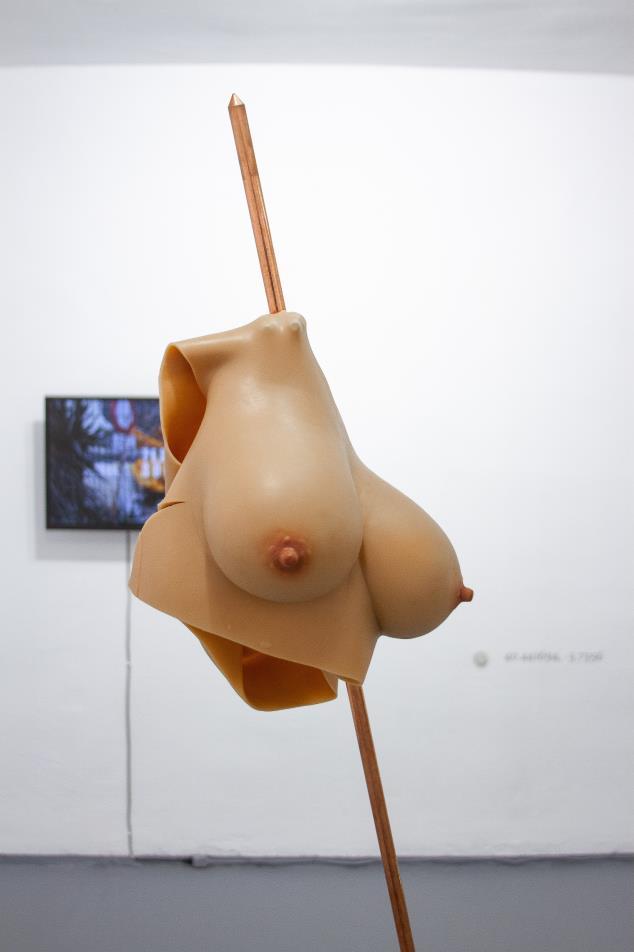
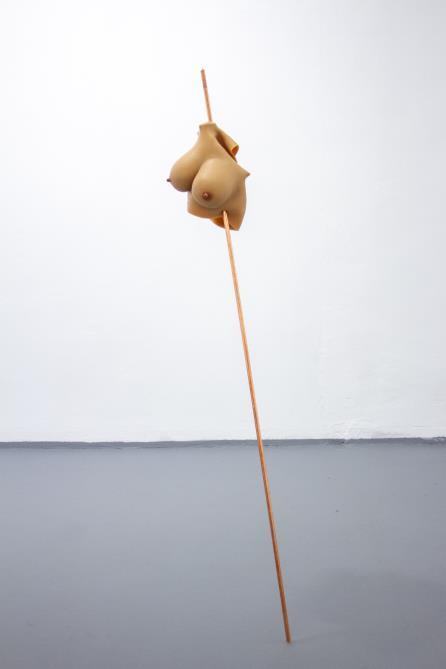
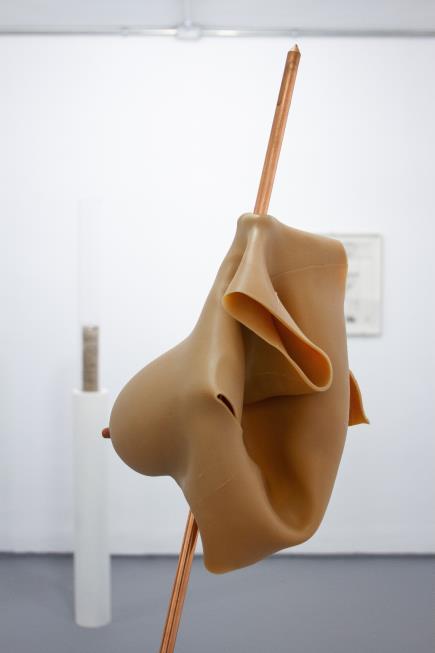
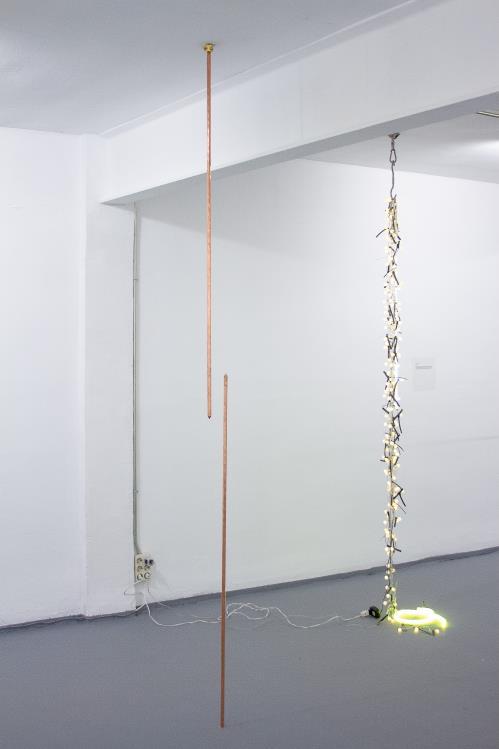
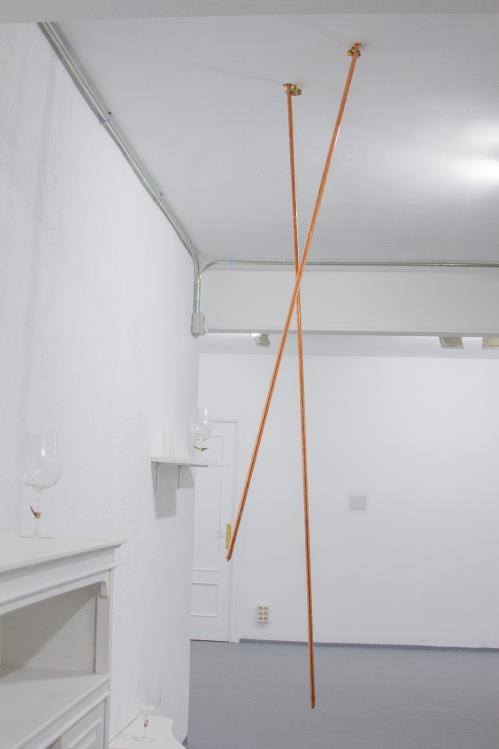

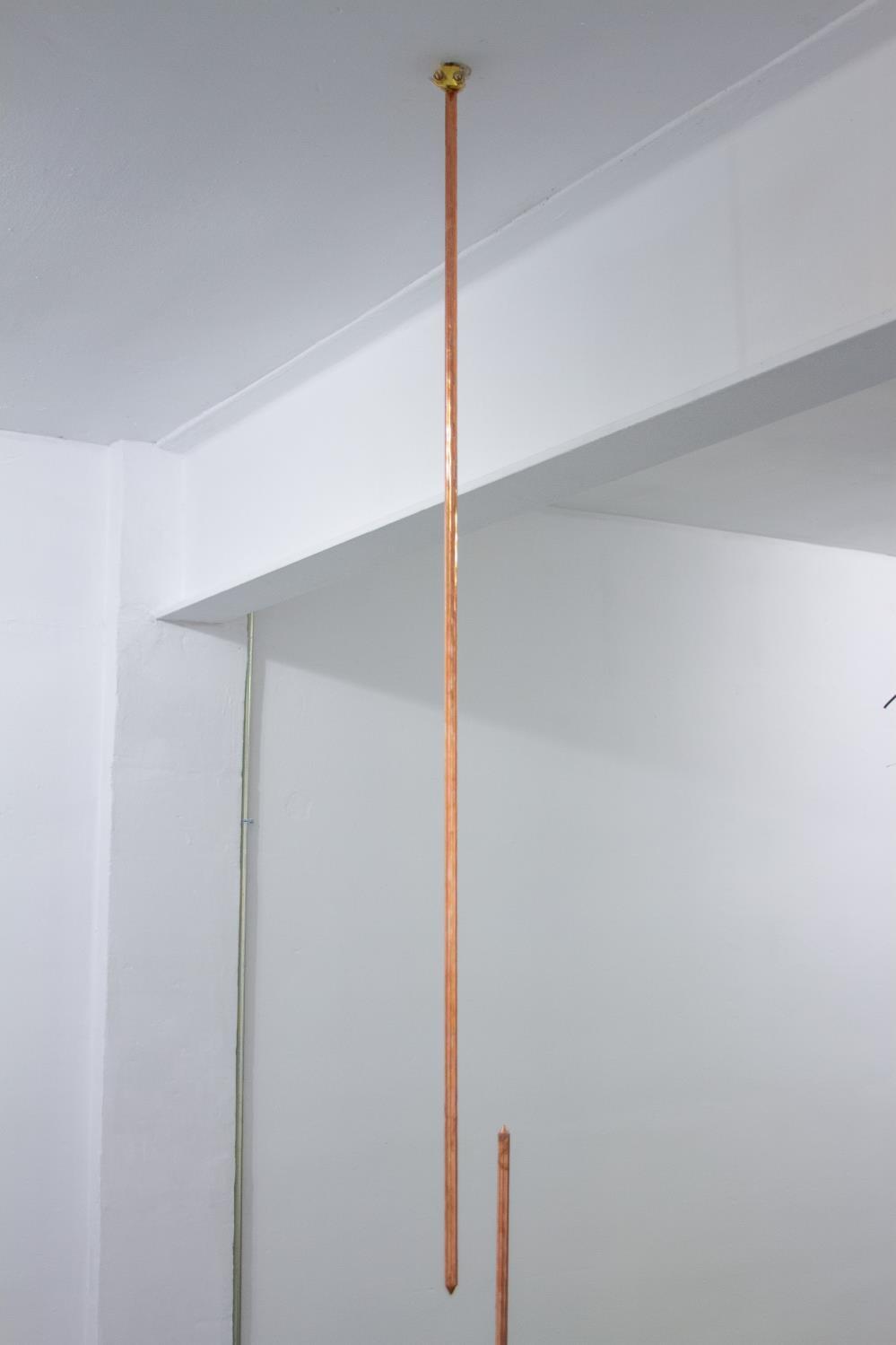
To The Forgotten Ones, 206 light sources of various scales and intensity were assembled. Each light corresponds to a bone of the human body and is labeled with its name. This piece introduces, in the trajectory of the Balada Tropical collective, the reflection on the future ways of construction and conservation of human bodies from virtual energy sources, something that not only will determine the structure of unknown intimate and social relationships, but our management and visions of time, birth and death. The labeling of the 206 bones of the human body as lines and points of light hanging from a butcher's hook, may be a pessimistic view of future corporalities. However, the fundamental intention is to establish a simile between bone and light, between an obsolete anatomy and an anatomy to come, in a non-hegemonic interaction network of bodies and realities still underconception.
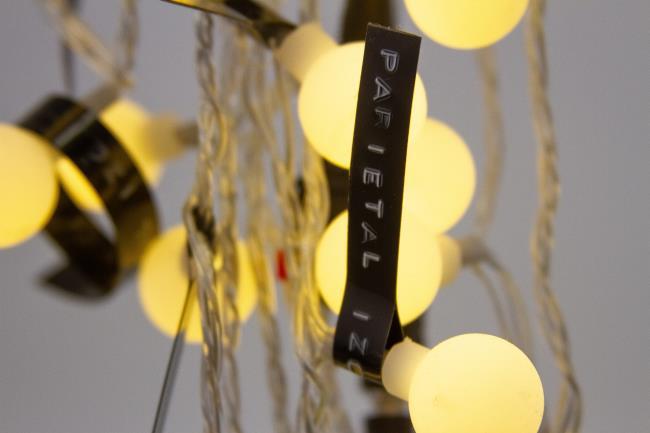
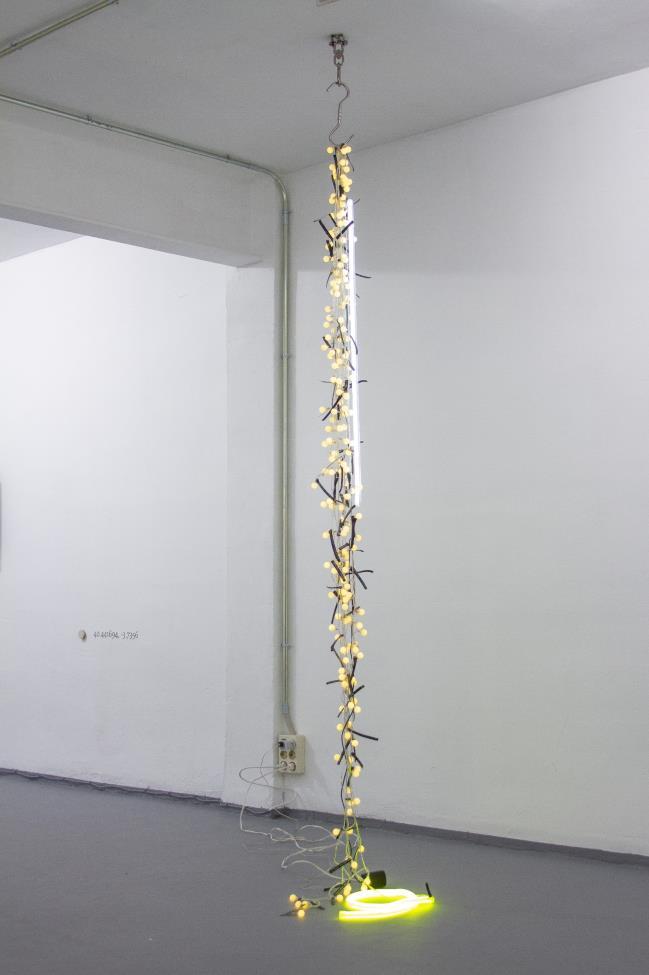
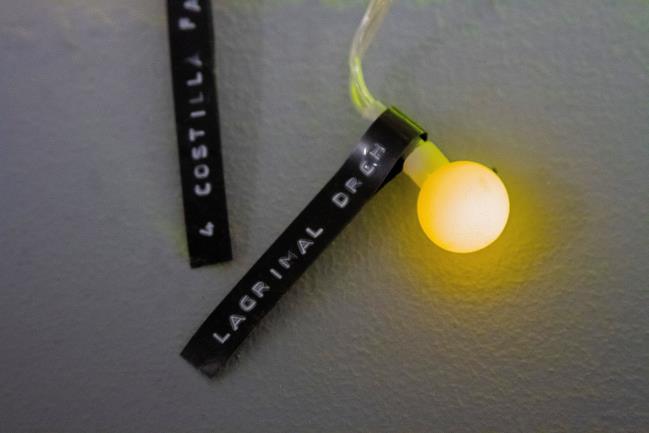
Espuela de copa [Cup Spur] is a series of objects that belong to the Speakeasy project; and its assembly comes from the etymological misrepresentation of the term cock-tail. The contrast of materials that make up these objects are intended to reflect that atmosphere of complicity between the prohibited and the permissible that was radicalized in the historical context of the speakeasies.
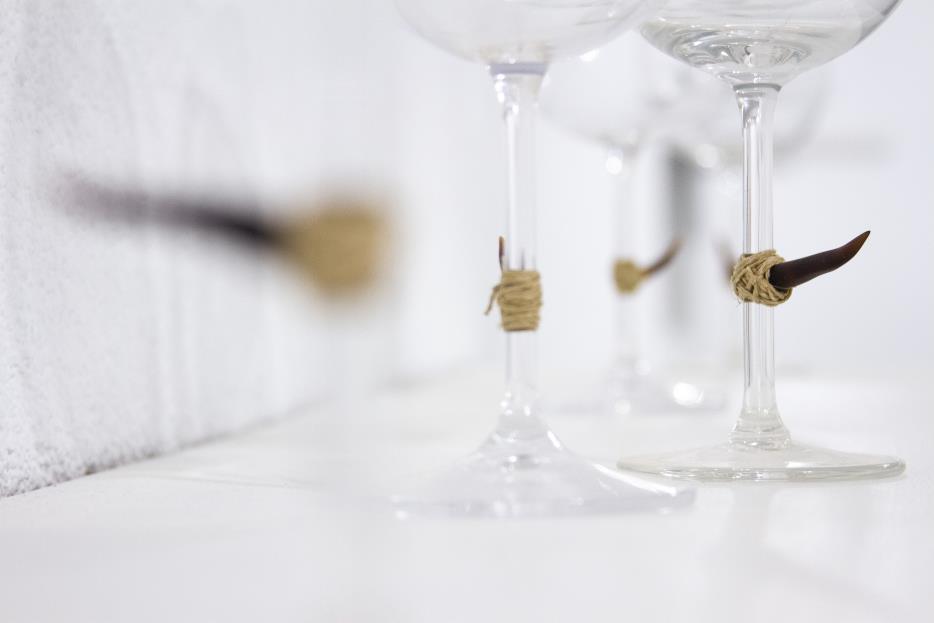
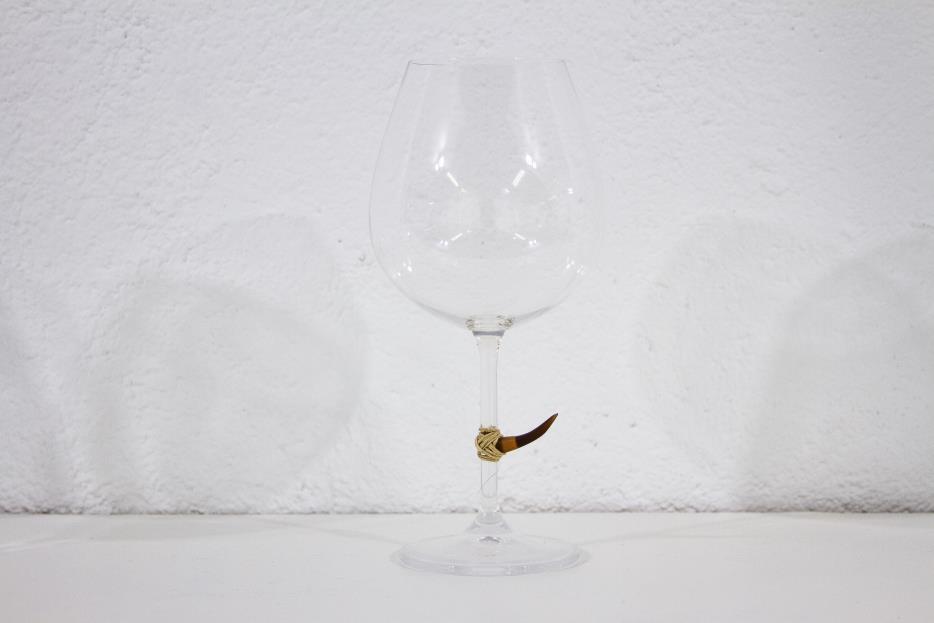
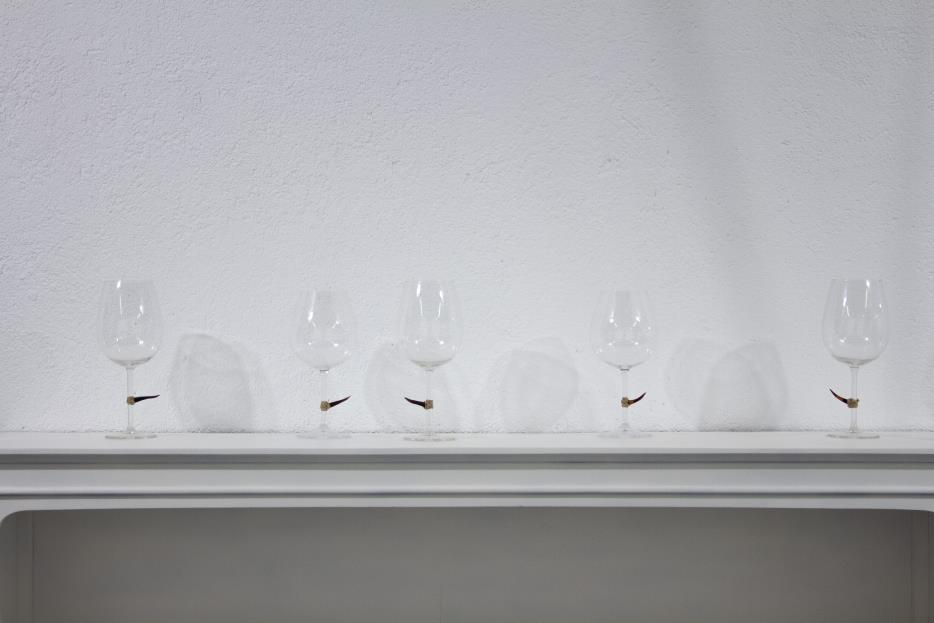
With degli Abati, the concept of paradiso seems to be symbolically ended; however, with Ferrari or Lezama Lima, this word takes a radical distance from itself, is erased and repopulated. With the first solo exhibition of the Balada Tropical collective in Madrid, which coincides with the opening of Late studiosociety, the aim is also to give new meaning to an increasingly unusual and familiar term that names the exhibition: Tierras. As a whole, the plurality of Tierras is based on the assemblage of objects that identify relations of conduction or isolation with the present, at the same time that it warns of a temporal and non geographical vision of space, understanding the construction of now, in its multiple levels of reality and realization, as part of a memory technology, of a stratified virtual atmosphere. In this sense, to produce is to bury, and to bury is to magnetize and is to lead to encounter and communication. In a global context where transparency and concealment are synonymous, the reiteration of the grounding rod in space, through walls and objects, aspires to stabilize, neutralize, from the negative pole (according to technical language), the signals about present and what is to come, hence they perceive themselves and the assemblies where it is settled as territories where this stabilization takes place. In line with Quentin Meillassoux, this emphasis on the contingency of language leads to the obsolescence of the future idea.

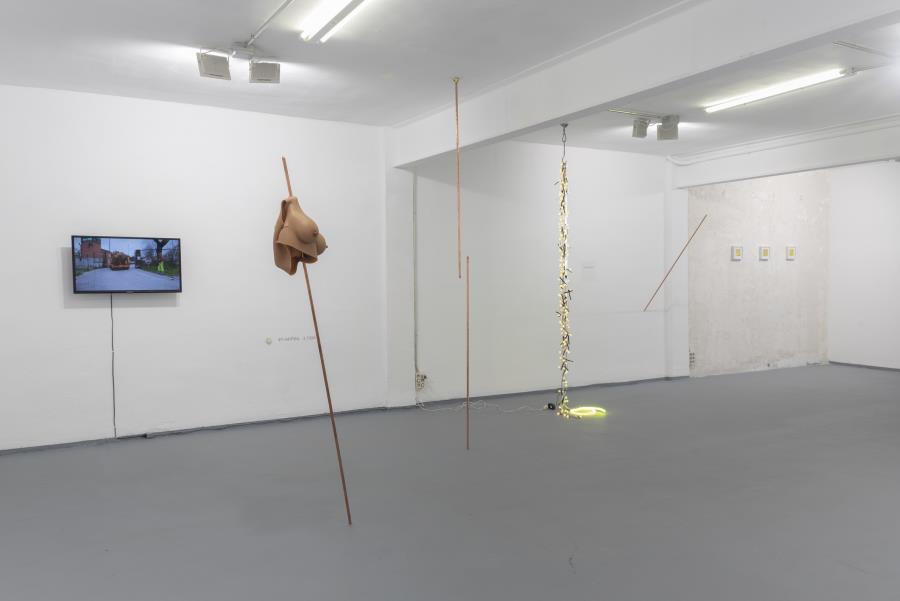
The presentation Speakeasy (Volume II) was the Havana Art Weekend (2019) headquarters. This edition was based on Severo Sarduy's poem What Happened to the Singers? which explores the sound memory of a country that seems to live in a convenient oblivion. The collective produces an open sound session that seeks to generate a sound grammar to interpret something they call politic of oblivion and memory. The objective was to foster a “temporary autonomous zone” based on sound and its ability to integrate experiences and languages. To this end, artists from dissimilar generations, identified with opposing and singular concepts were invited to build sound objects and make random interventions. Little by little all those sound remains accumulated in the gallery in different forms. They also constructed a series of light sculptures based on slogans taken from critical texts on Balada Tropical. Those sculptures speak of the flexibility of methods and materials usually displayed by the collective.
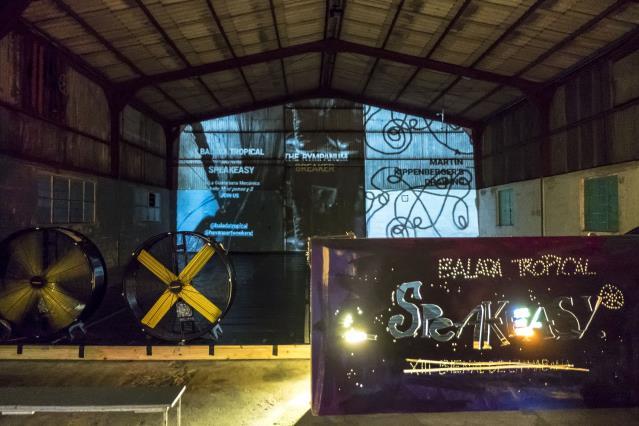

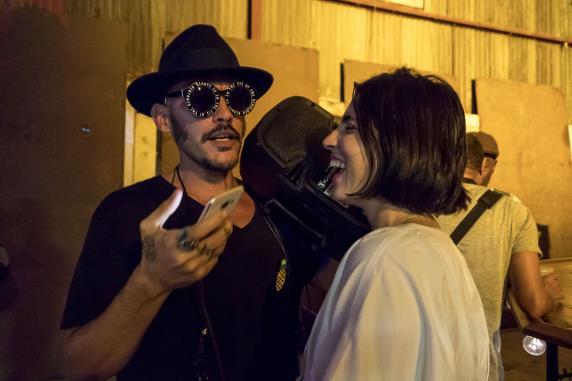
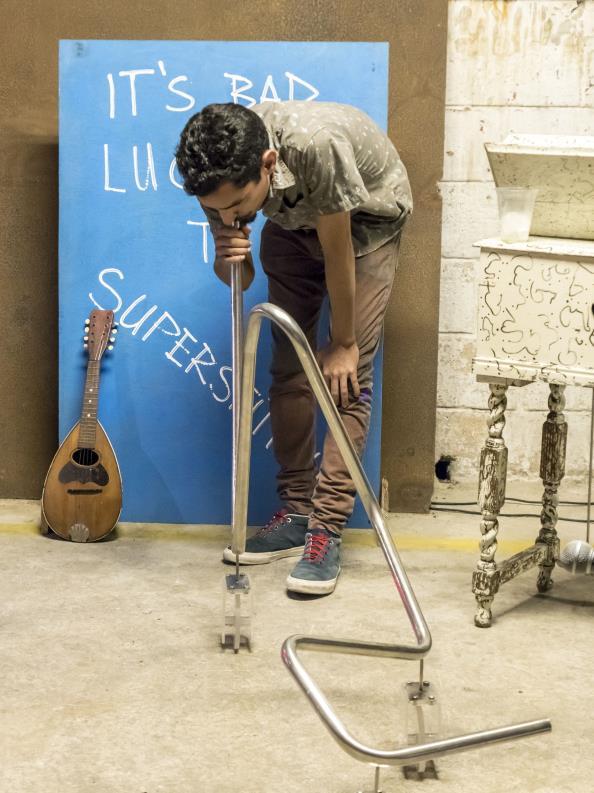

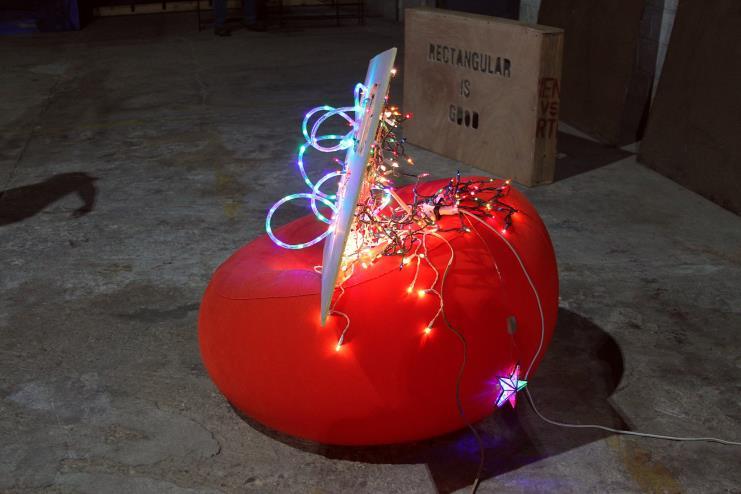
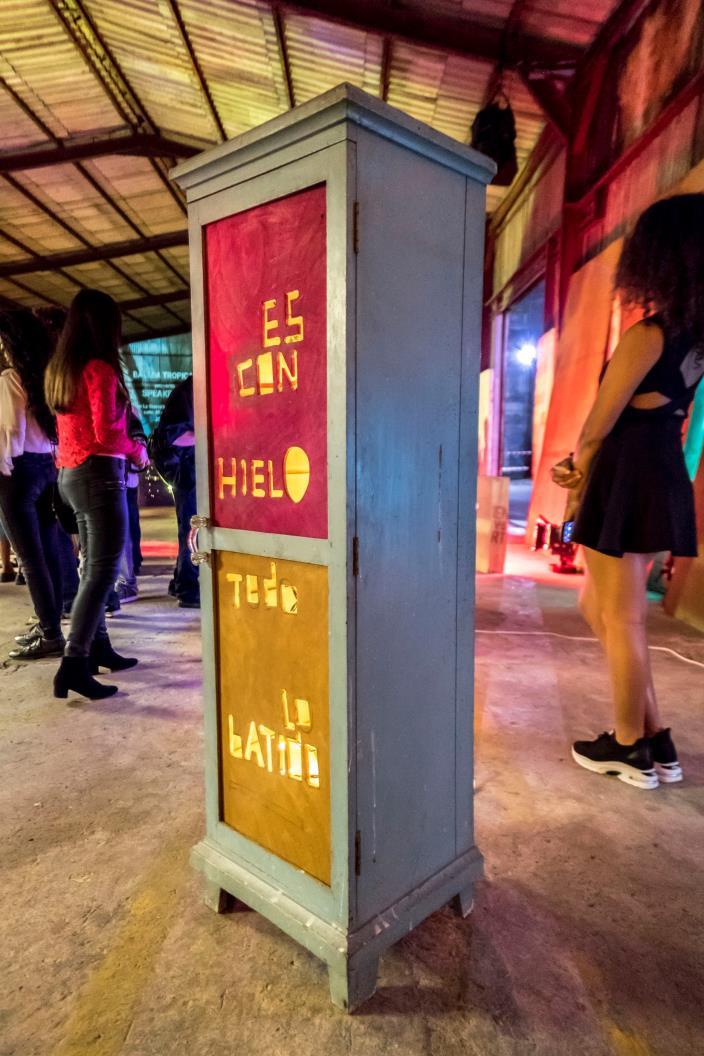
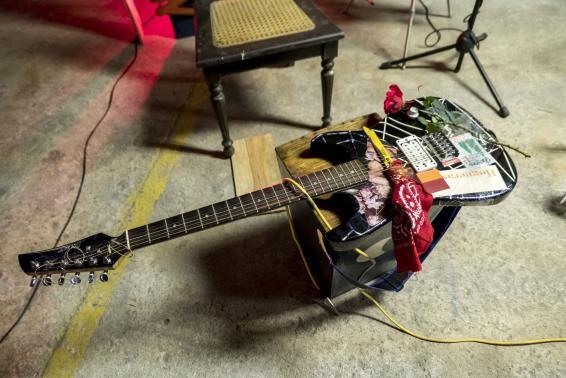
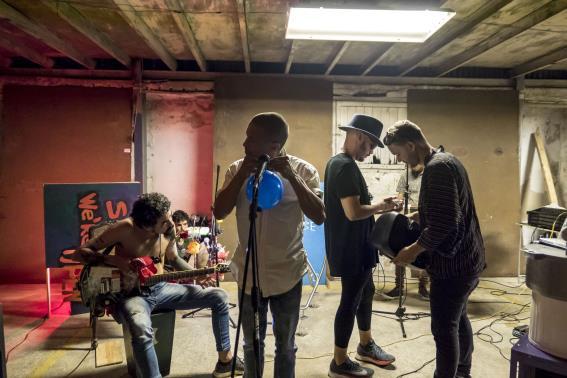
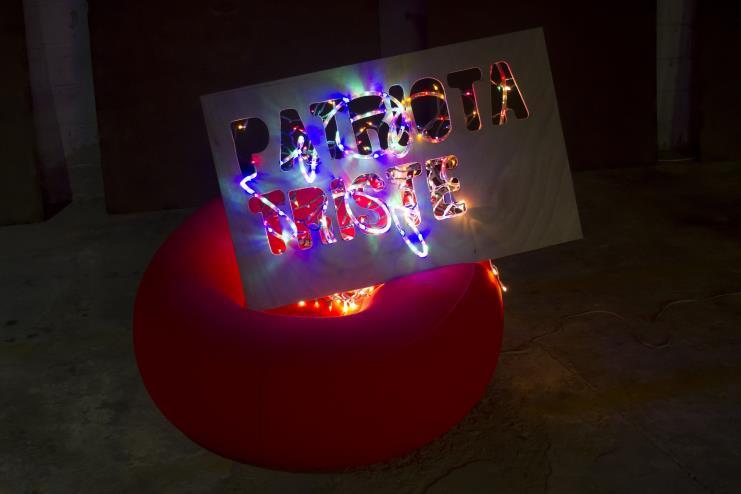

Speakeasy works on the links between knowledge and its practical execution, contexts and audiences, discourses and atmospheres. As an extension of The Cocktail Project, Speakeasy materializes the process of transforming an intellectual experience into a sensory experience. At the core of the process was the becoming of La Moderna Gallery into a cabaret, and the design of creative alliances where collaboration works out as material and objects as practices.

Speakeasy takes its name from the clandestine bars of the “prohibition era” in the USA (1920-1933). Which raises a social point of view in the project that refers to the strategic behavior between what is prohibited and permissible, and to the capacity of art to upgrade frontiers of dialogue between antagonistic phenomena. All that complex system of relationships created to condition a project that by itself and continuously favors its presentation, tasting, dematerialization and recontextualization.
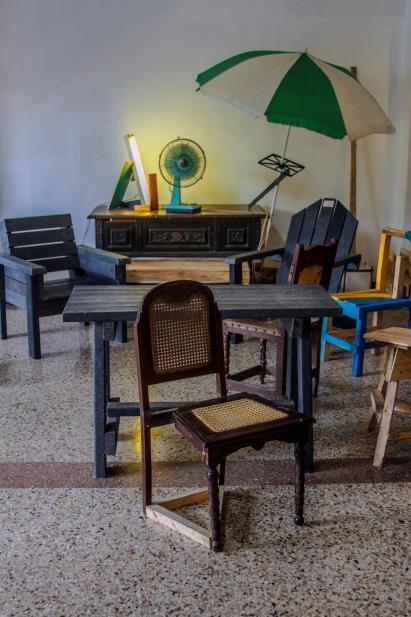

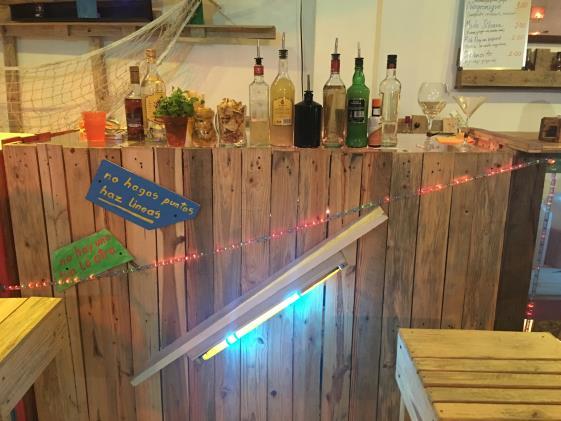



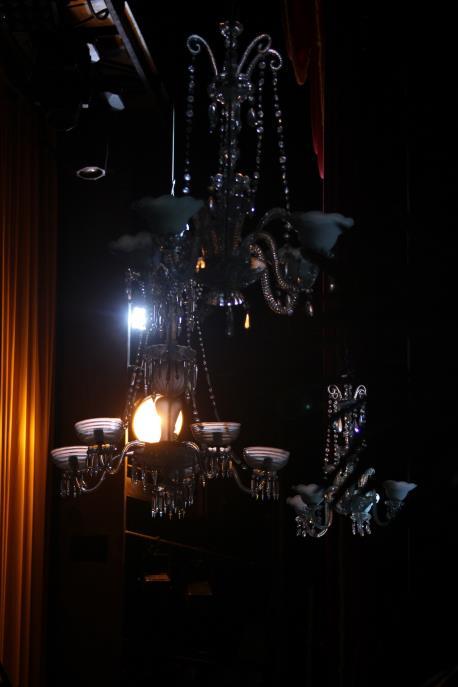
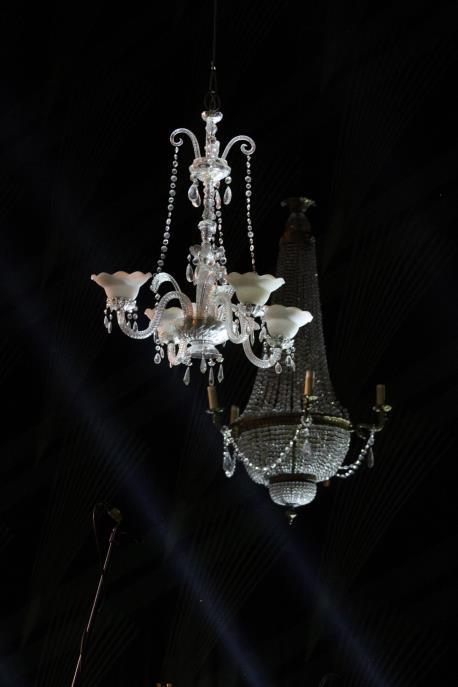
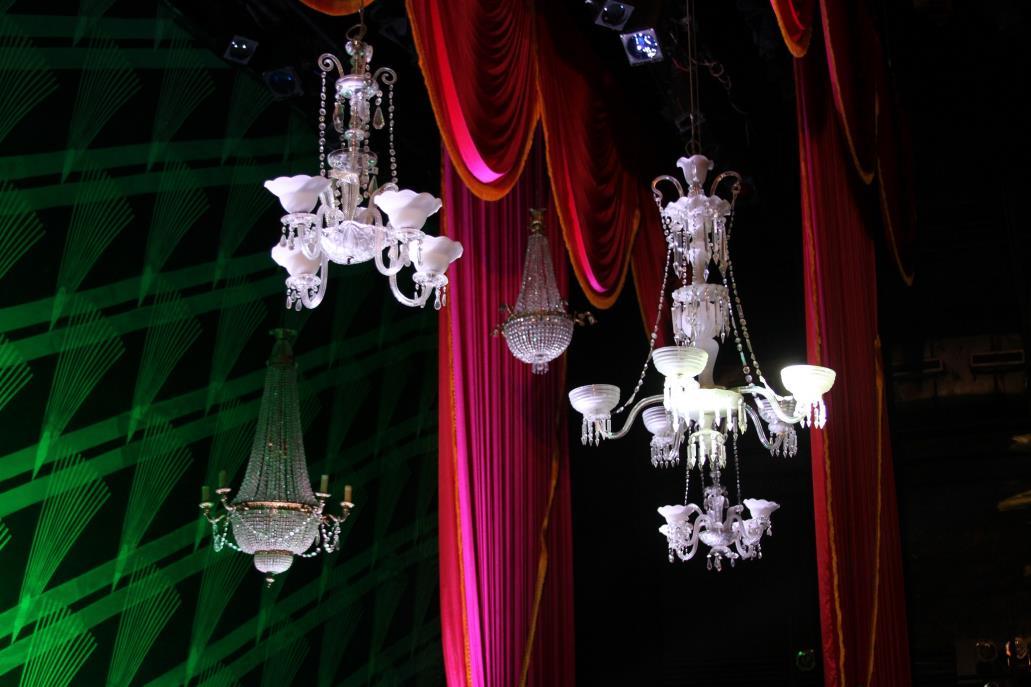

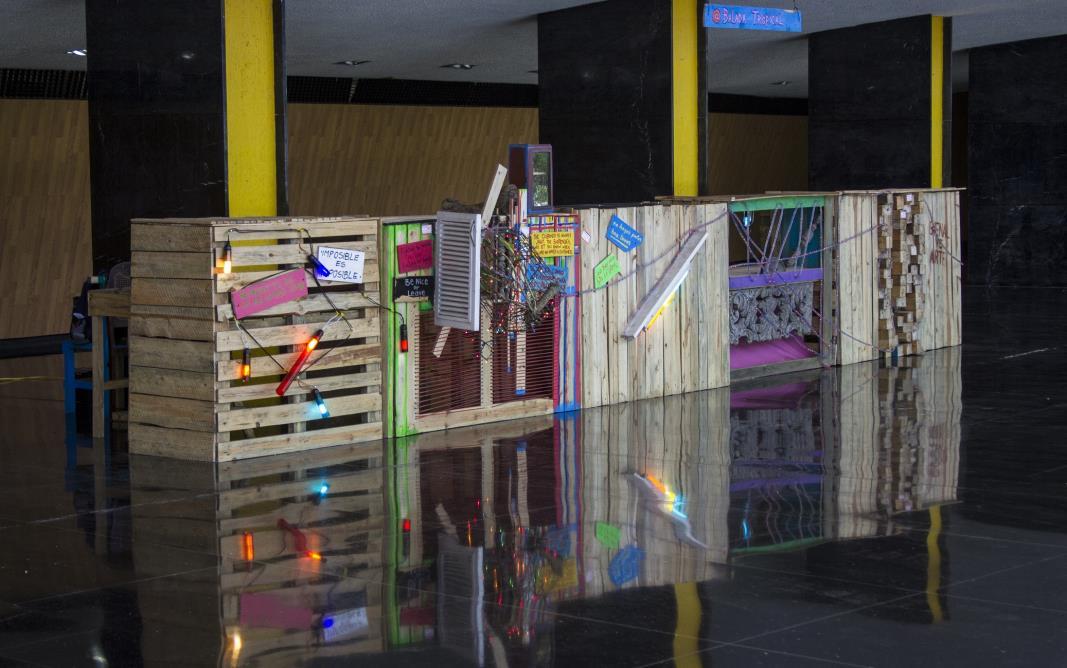

The presentation Sugarcanes Vs Palm Trees (Galleria Continua, 2018) developed an encounter of two radically opposed modes of enunciation: art criticism and “decima” (tenth), in its variant of “punto cubano” (cuban point). The idea was to examine the enunciative capacity of those languages, investigate the nature of its signs, find its areas of connection or divergence, take them to its limits of interpretive tolerance, beyond its symbolic context, to generate an exercise of communication between foreigner and native, tradition and postmodernity. To develop this encounter, a series of cutstatements were extracted from the anthology "Follia Continua" (25th anniversary of Galleria Continua), being used as “pie forzado” (given line) by a group of traditional music, specialists in the tenth impromptu. Here some of the cut-statements: a significant cause, organize the wonderful, a way to build, a private dimension, Terzo Paradiso, etc.
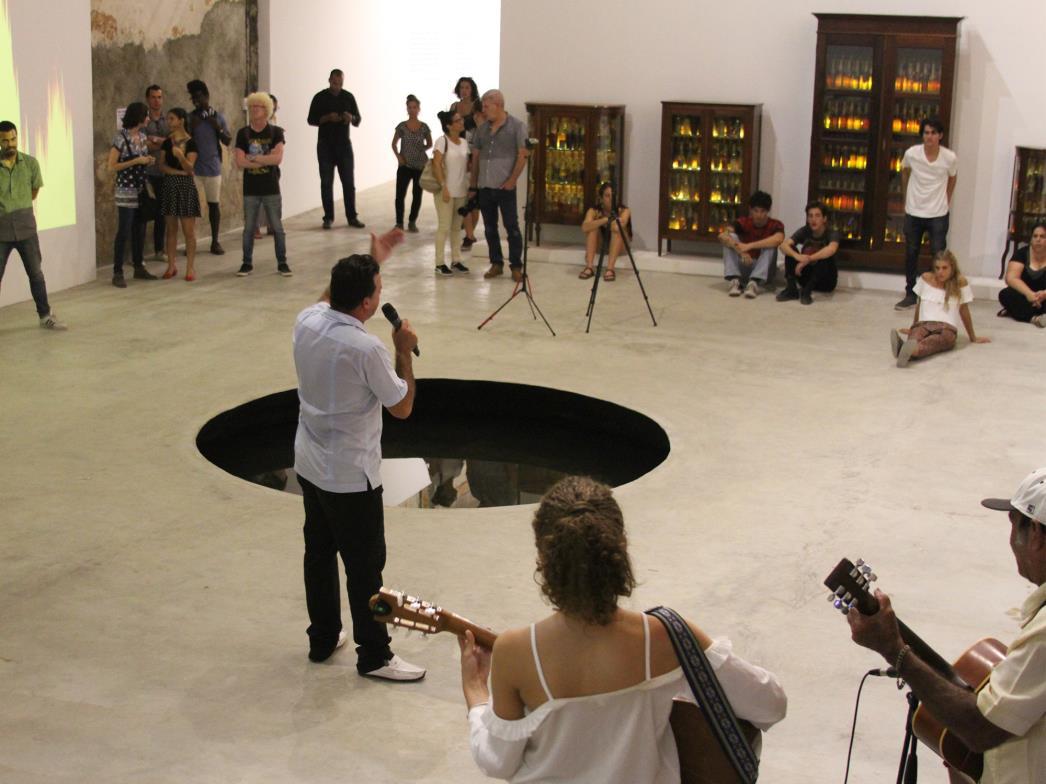
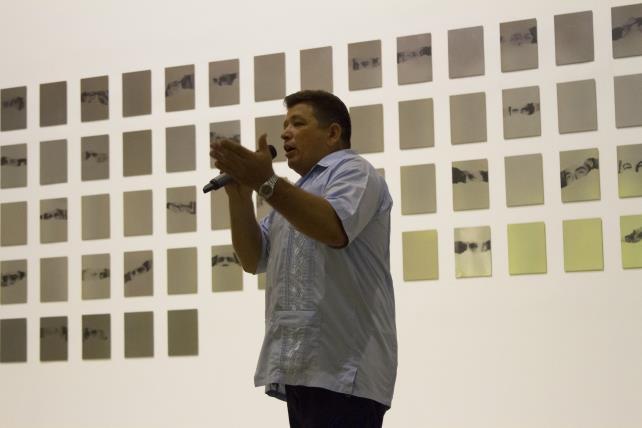
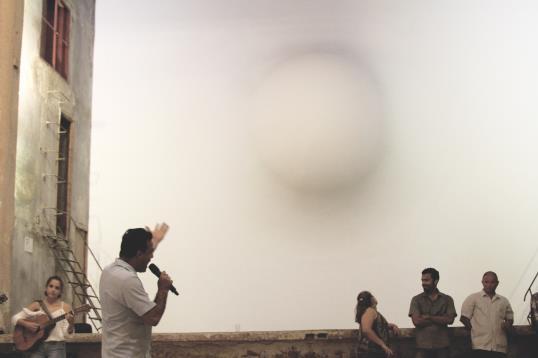
The presentation Balada Tropical Visits Earth (CDAV, 2017) is an aimless journey. The work begins with a lyrical chorus interpreting the symphonic poem Also Sprach Zarathustra, by Richard Strauss, used by Stanley Kubrick in 2001: A Space Odyssey. In this case, the poem was arranged backwards, being sung from the end to the beginning. The return to lyrical singing and to Earth speak of the need to rediscover collective harmonies and the overestimation of the infinite and unknown.Once the chorus is over, there is no longer planning or correction. As soon as a line of meaning appears, it is torn, renewed, fragmented among the many other gestures that the general environment uninterruptedly dilutes or folds. And that anarchic geography of annihilation and upwelling is what distinguishes the journey that Balada Tropical proposes to us.Thus, the true journey is the making of the emotional and material conditions to afford the creative act. I mean: it's the act of creation publicly happening. ral” constitution, transcends a model of nature. The mutilation appears then, with the puncture of the grounding spike, as a flowering gesture that surpasses all somatic, social or spiritual identity.



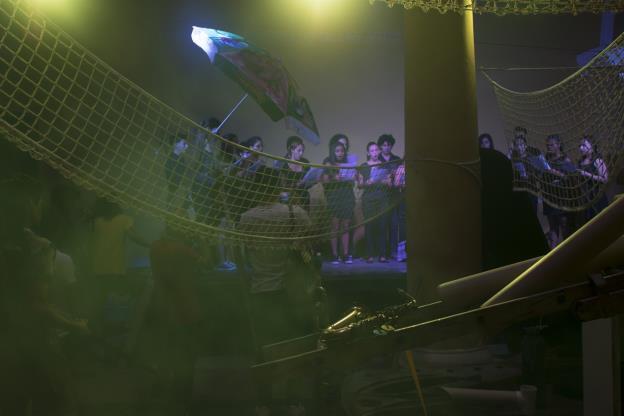
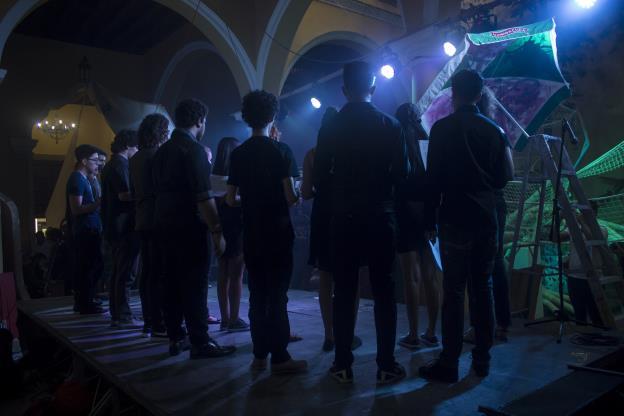
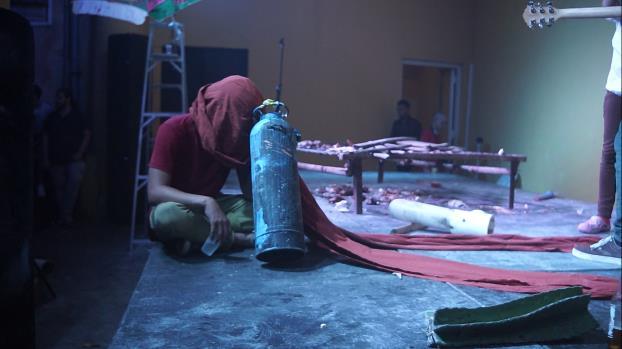


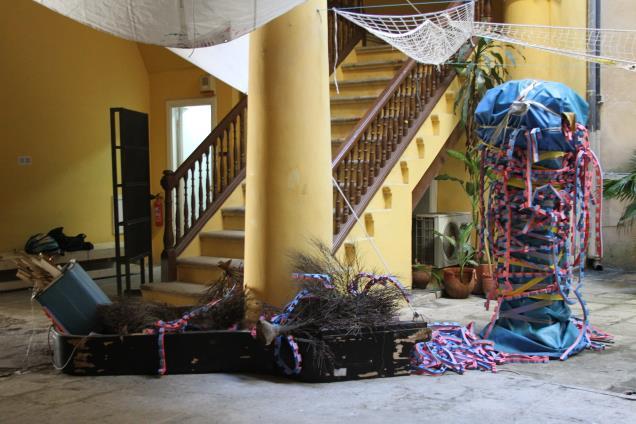
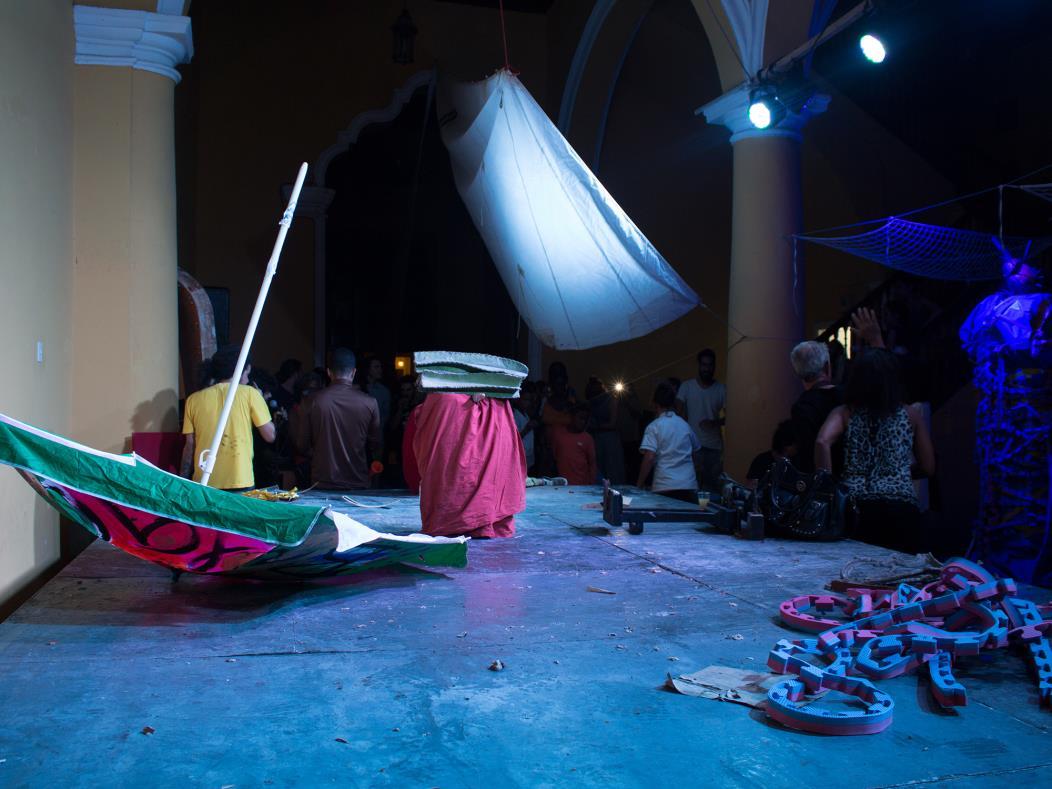
The conception of THE COCKTAIL PROJECT (2017) began in one of the oldest bars of Havana, El Lucero, with the participation of 14 bartenders, and the consequent process of invention and selection of their proposals. The project arises with the premise of materializing some of the main notions that Balada Tropical has explored in its trajectory: creation, decomposition, assimilation, resistance, etc. THE COCKTAIL... seeks then to establish an alliance with the totality of knowledge that make it up. Hence the proposal to extract it from the gallery and release it into its space of excellence: the bar. THE COCKTAIL’s place... is the place of sovereignty. As soon as it opens for each subject an “outside of selves”, it leads to a shared speech, intimately multiple, sometimes unable to be articulated in words, sometimes overflowing. Language of the approach, always spellbound, always direct, and always magnifying itself in a set of reinventions that ensures the link with the others.
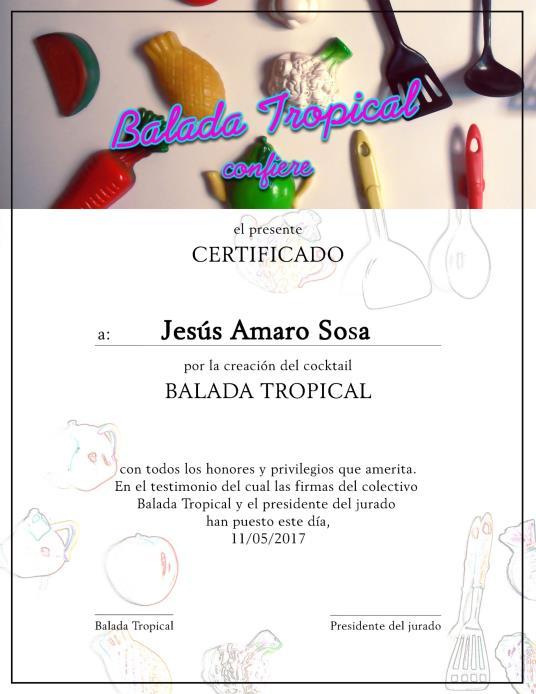


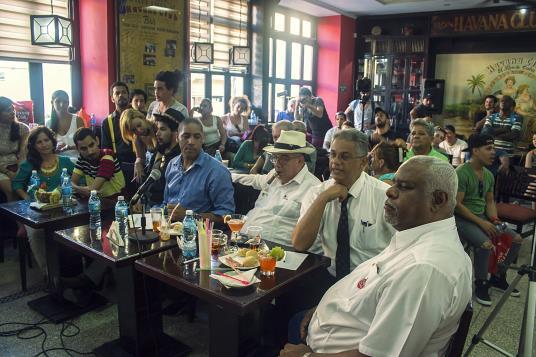

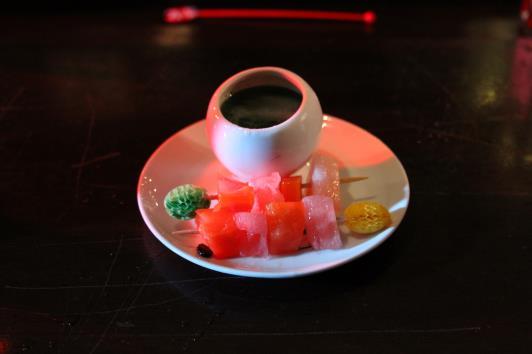
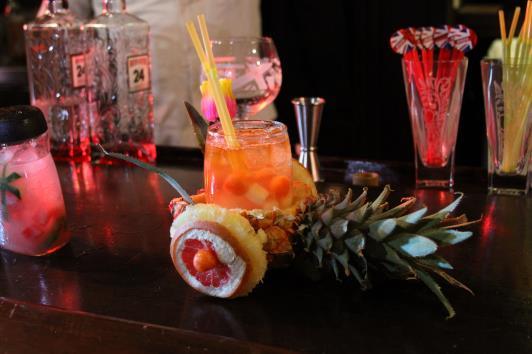
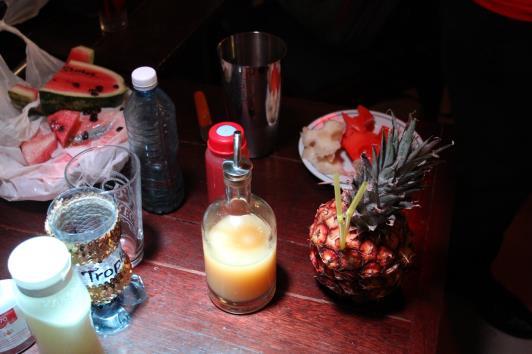


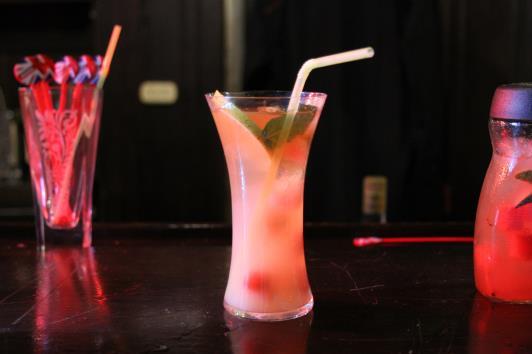

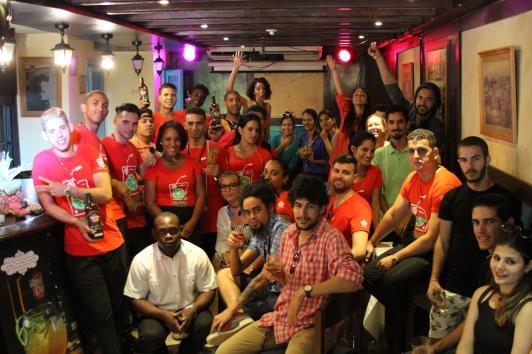
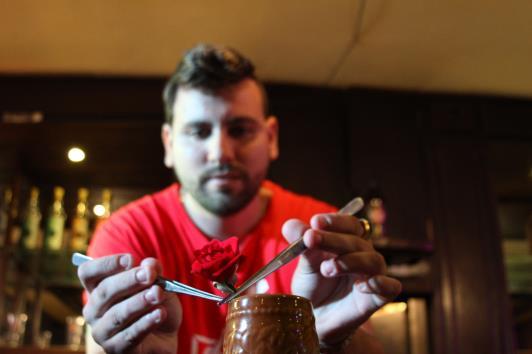

Touching the Cold (Havana Gallery, 2016) is an immersive installation based on the deployment of a dystopian petro-aesthetic. According to this idea first proposed by Reza Negarestani in his novel Cyclonopedia, every object built before and during the Fourth Industrial Revolution (4IR) is the remnant of a crude (oil); that is, of a simultaneous process of combustion and metafossilization. Consequently, the montage is conceived as a petro-cartography of fluids, genetically modified products, processes and objects without identity, function, material or conceptual limits. As a whole, the installation shows a continuum of aesthetic, political, philosophical, affective and economic emergencies, whose possible narratives and human links are targeted by this notion of physical and virtual (processing of natural impurities that generates more and different kinds of impurities) crude.
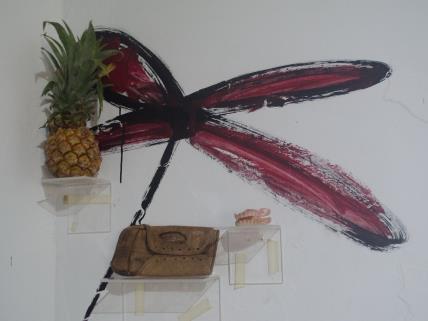
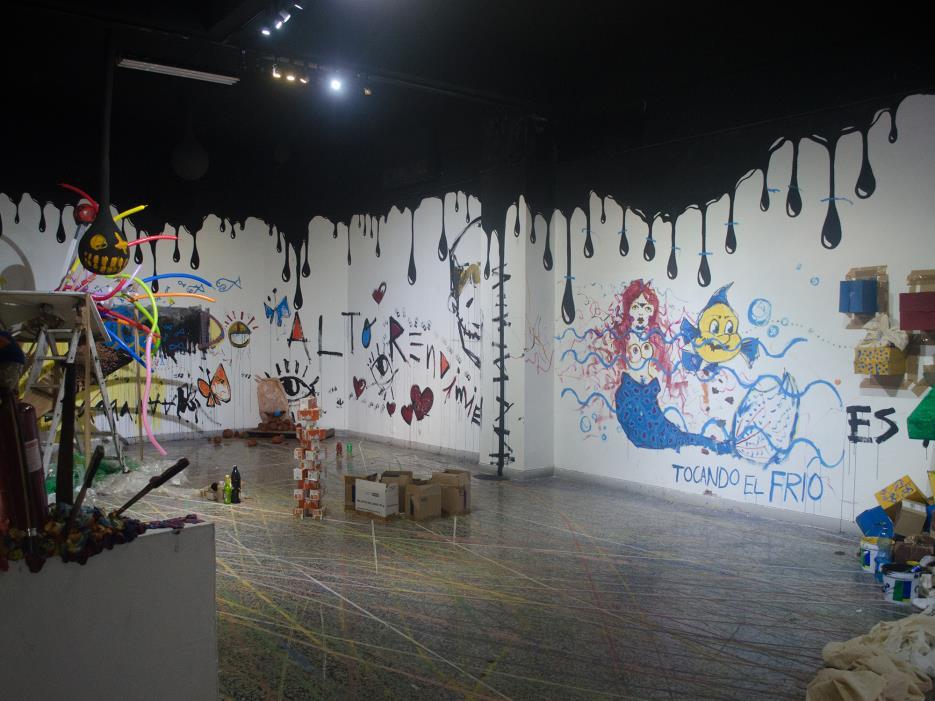
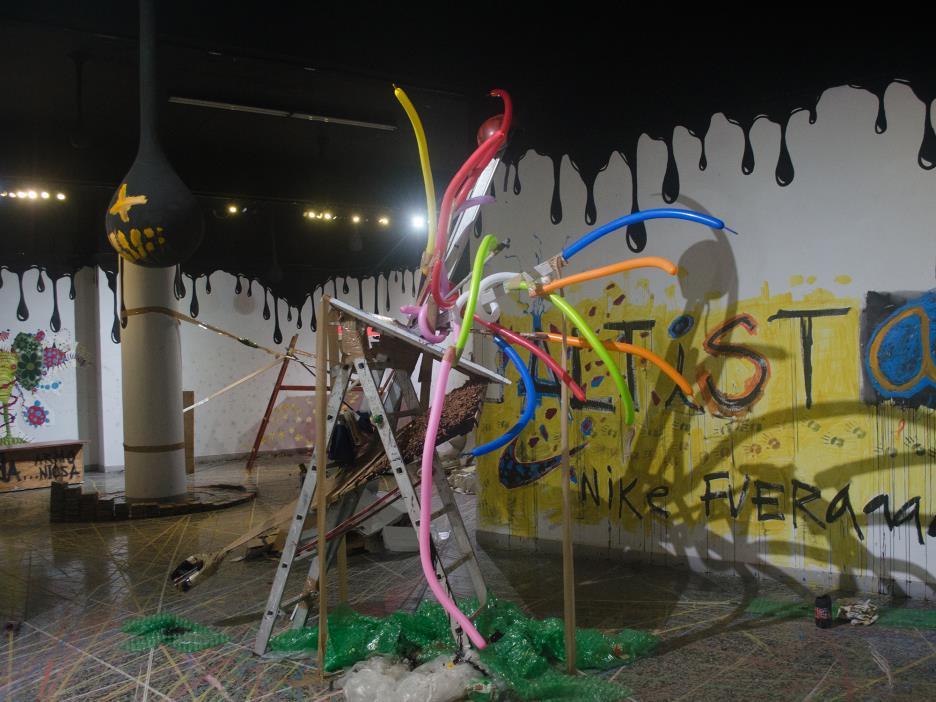


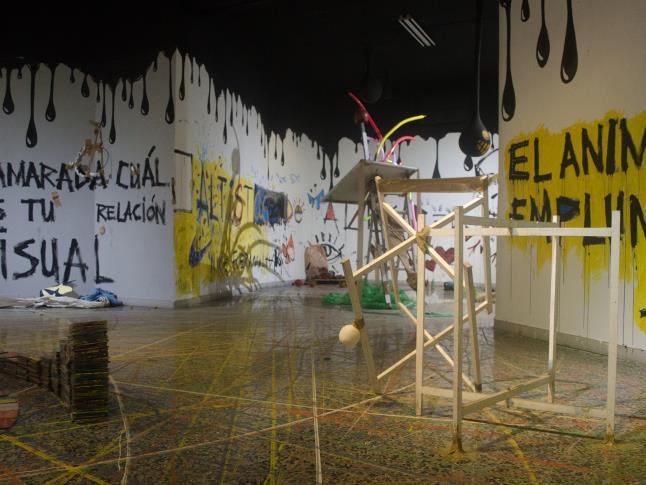

The presentation Stockholm Syndrome (Cuba Pavilion, 2014) works on the dislocation of traditional role dynamics linked to the psychology of power and image. With that goal, the collective unleashes a series of concentric acts to ensure the transition from a state of aesthetic repression to a state of factual complementation and dedramatization.According to the Syndrome…, the mechanism of empathy that a victim develops for an oppressor, is expressed here in terms of artist-audience and action-perception. The first dislocation appears with the geometrical set up of wild plants, which speaks of the correction of nature, or of what is assumed as natural. The second dislocation starts with the action (duration approx. 4 hours), inside the hermetic white cube, with a group of musicians atonally decomposing the hymn L’Internazionale. In time, the vibrations dismantle the cube, all practical and symbolic boundaries tend to vanish, and new techniques of mutual construction are provoked.
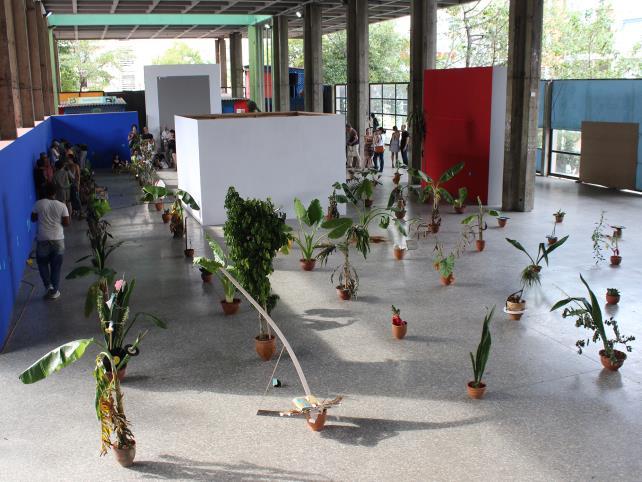
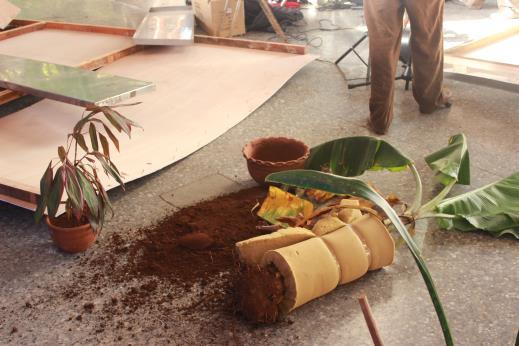
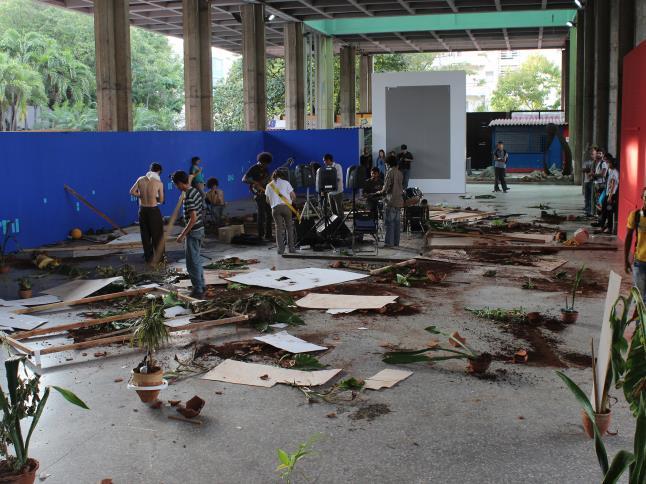
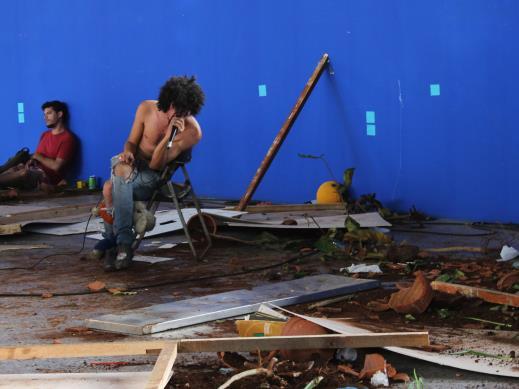
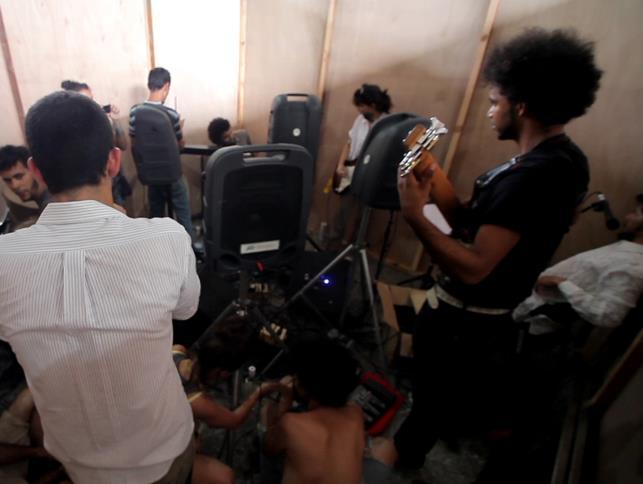
The exhibition Weightlifting (Higher Institute of Art, Havana, 2012) is a site specific displayed for the XI Havana Biennial.Among all the spaces proposed by the Biennale committee, we chose this one to introduce the notion of "dismay of form" that we had developed in a performatic level. Thus, the piece simultaneously subverts the functionality of the space (gym) and the image of the human body to think of other anatomies, other proportions. From there we built tired apparatus, taking into account three concepts (or magnitudes): body-machine-space mobilized to the limit of their reversibility, in a gesture of abundant and indifferent modeling of desire that is unceasingly projected, creating a dynamic of accumulation where the absent force of the body and the rheumatic synergy of machines, design a contrasting environment between the agile and the variegated, the canonical and the deformed. At all times the audience could walk through the work and perceive those alterations.

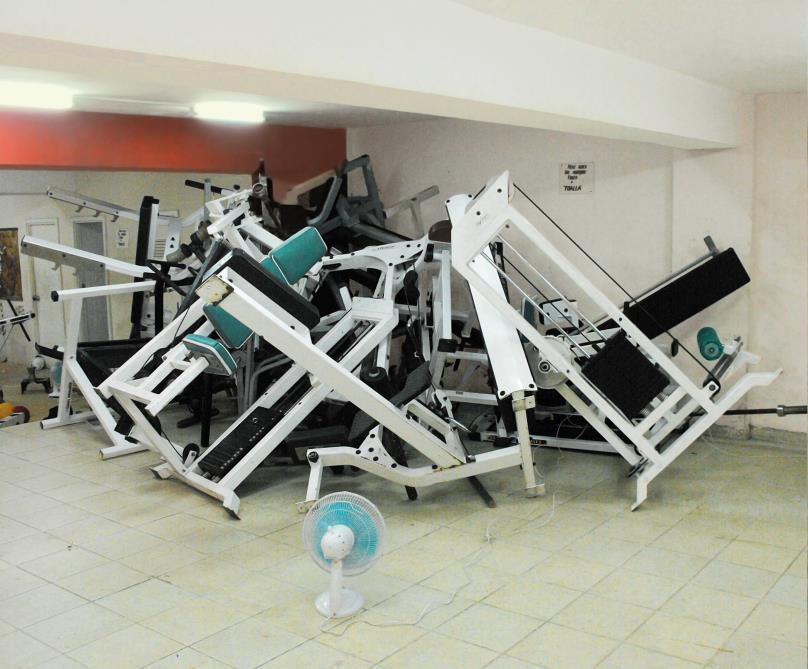



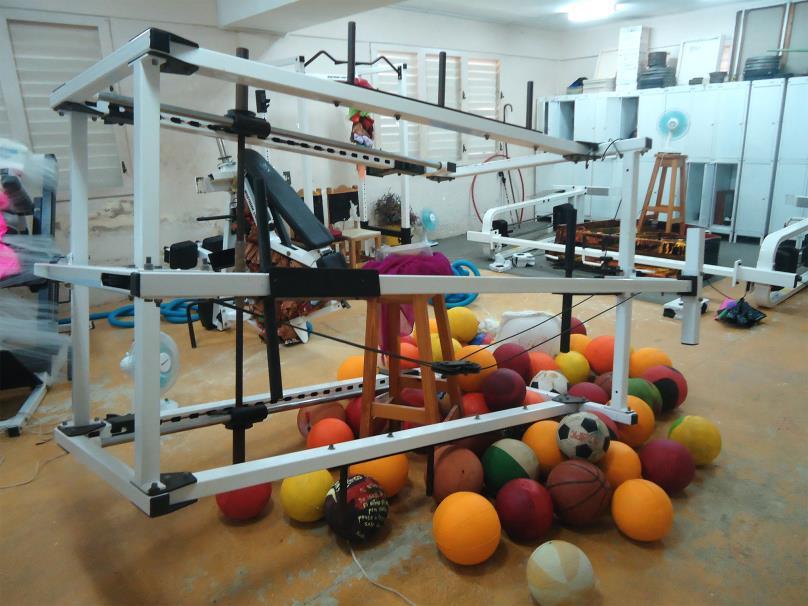
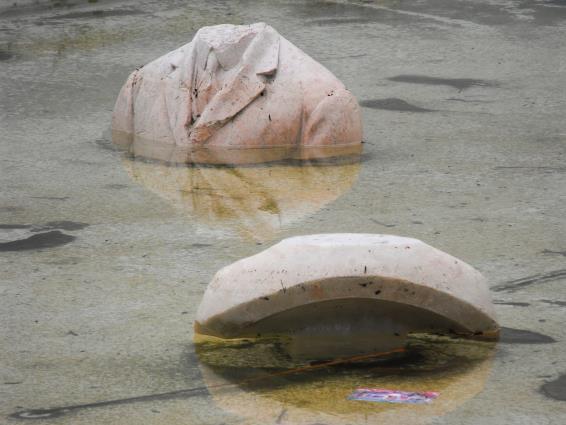

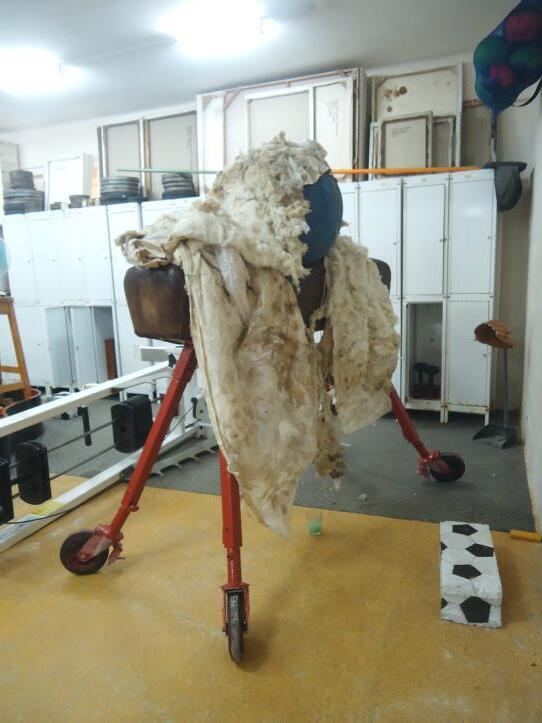
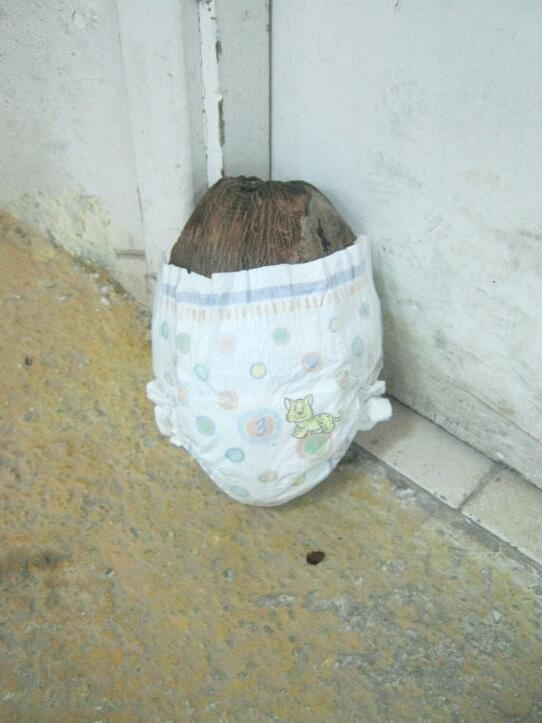
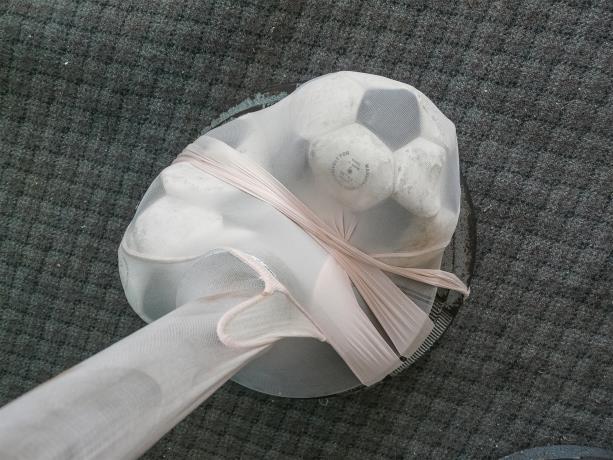
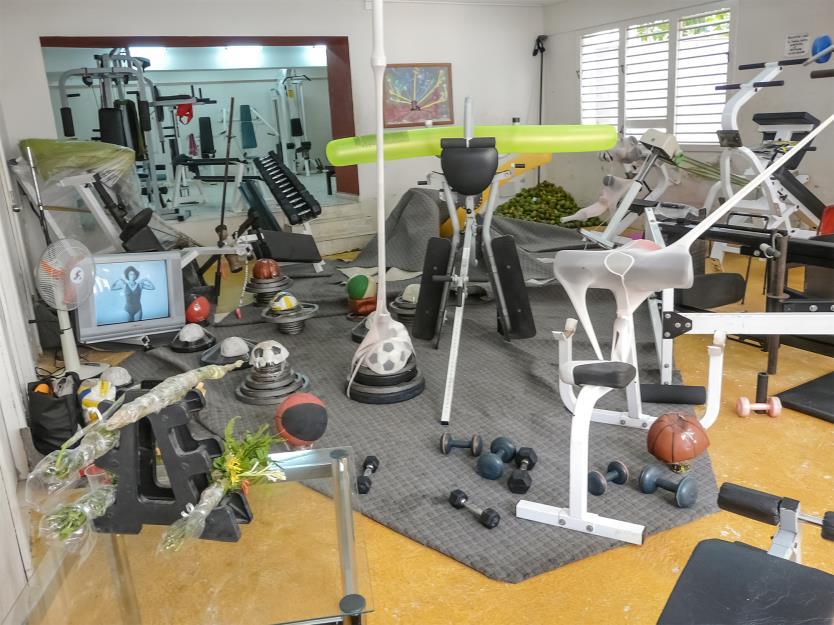


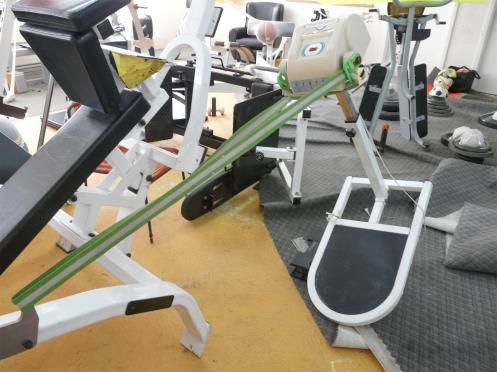
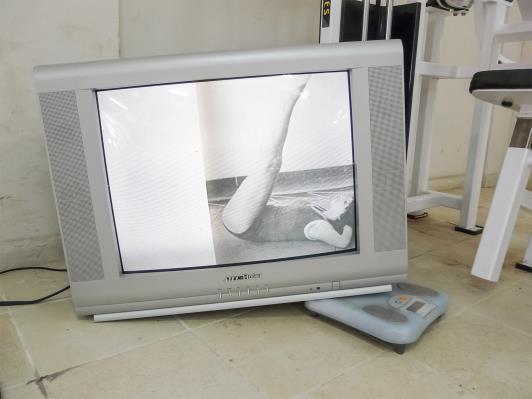

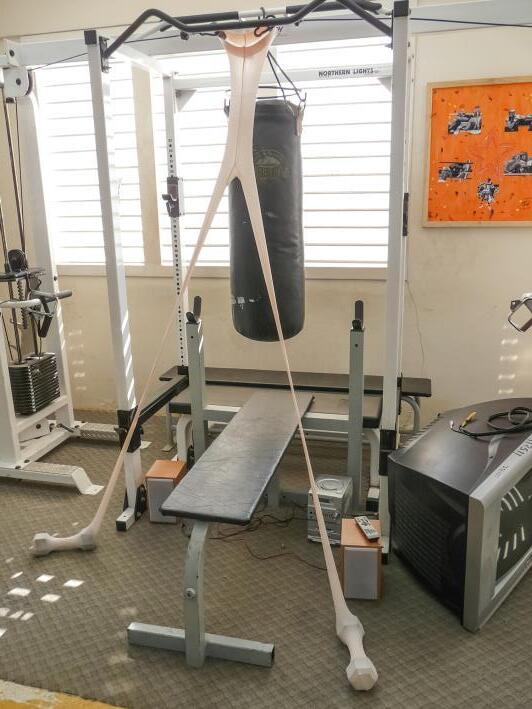

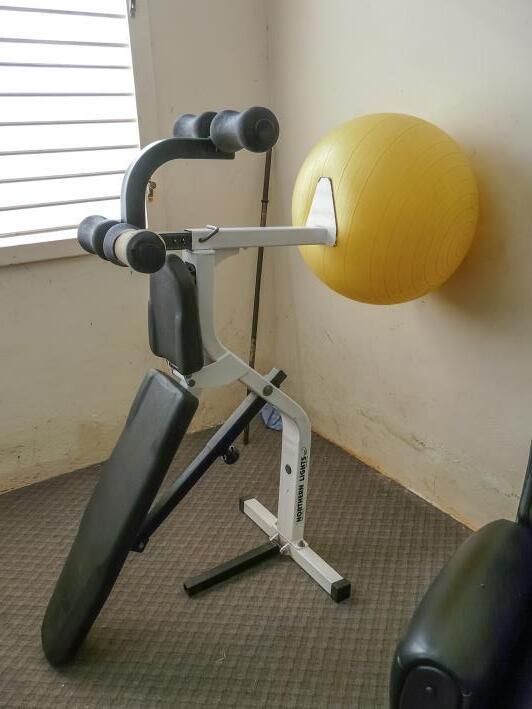
The presentation Fugitives from Glamour (Higher Institute of Art, 2011) begins with a jazzy arrangement of Mario's death tune in the videogame. The work condenses some of the topics that mark the first stage of the collective since its foundation in the spring of 2009: the interdependence between events, objects and people, the recycled and the natural, the technology and the body, obsolescence, fetishism, the complexity of urban signs of second and third nature, the iconography of mass culture, etc. The presentation was displayed from simultaneous and random actions that deconstruct its general atmosphere, from the elementary level of the syllable, to the assembly of objects, music, light, and the very ways in which people relate. The title Fugitives from Glamor alludes to a metaphorical “escape from time”, a certain sense of dislocation, a manifest need for “reenchantment and originality” that calls for new styles of interaction, presentation and narration.
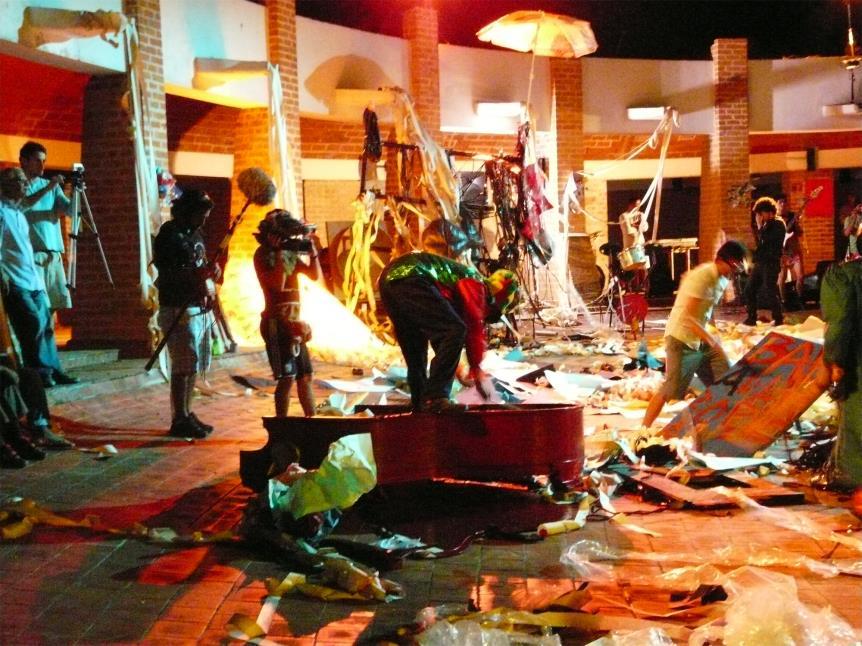

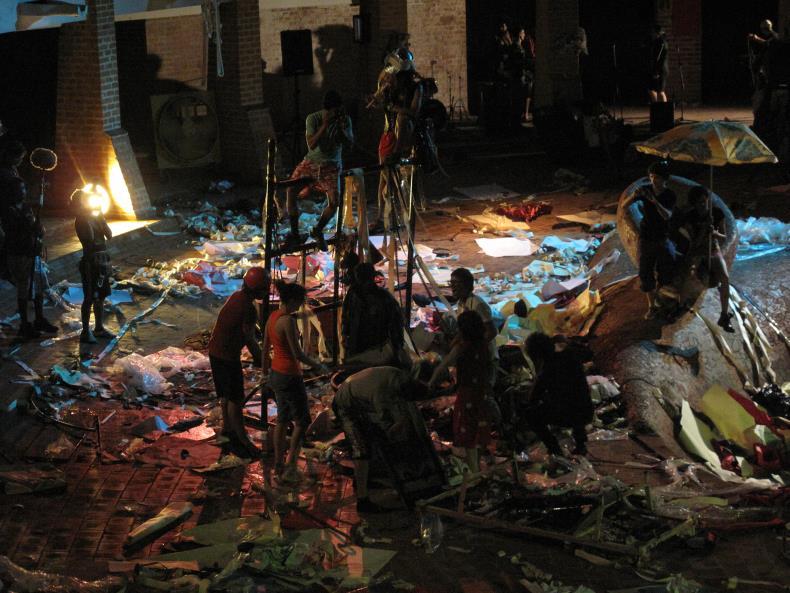


SOLO EXHIBITIONS
2023 - Tierras, Late Studio-Society, Madrid, Spain.
2019 - Speakeasy (Volume II), Havana Art Weekend, La Naranja Mecánica, Havana, Cuba.
- Speakeasy (Volume I), XIII Havana Biennial, La Moderna GalleryEl Apartamento Gallery - National Cuban Theater - Estudio 50 - Hotel Grand Packard, Havana, Cuba.
2018 - Sugar Canes vs Palm Trees, Galleria Continua, Havana, Cuba.
2017 - Tropical Ballad Visits the Earth, Centro de Desarrollo de las Artes Visuales, Havana, Cuba.
2016 - New Experiments and Observations Touching the Cold, Habana Gallery, Havana, Cuba.
2014 - Stockholm Syndrome, Cuban Pavilion, Havana, Cuba.
2013 - Actions that Would Make you Feel Guilty for Not Doing Them, Studio-Theater Vivarta, Havana, Cuba.
2012 - Weightlifting (Volume II), XI Havana Biennial, Universidad de las Artes, Havana, Cuba.
2010 - Fugitives from Glamor, Universidad de las Artes, Havana, Cuba.
Studio: Nicolás Morales 35, ZIP 28019, Madrid, Spain
Web: baladatropical.wixsite.com/baladatropical
Video files: youtube.com/@baladatropicalartgroup/playlists
Email: baladatropicalcontact@gmail.com
Cell: (+34) 613 273 816
2019 - ScholarshipAntonia Eiriz Winner
